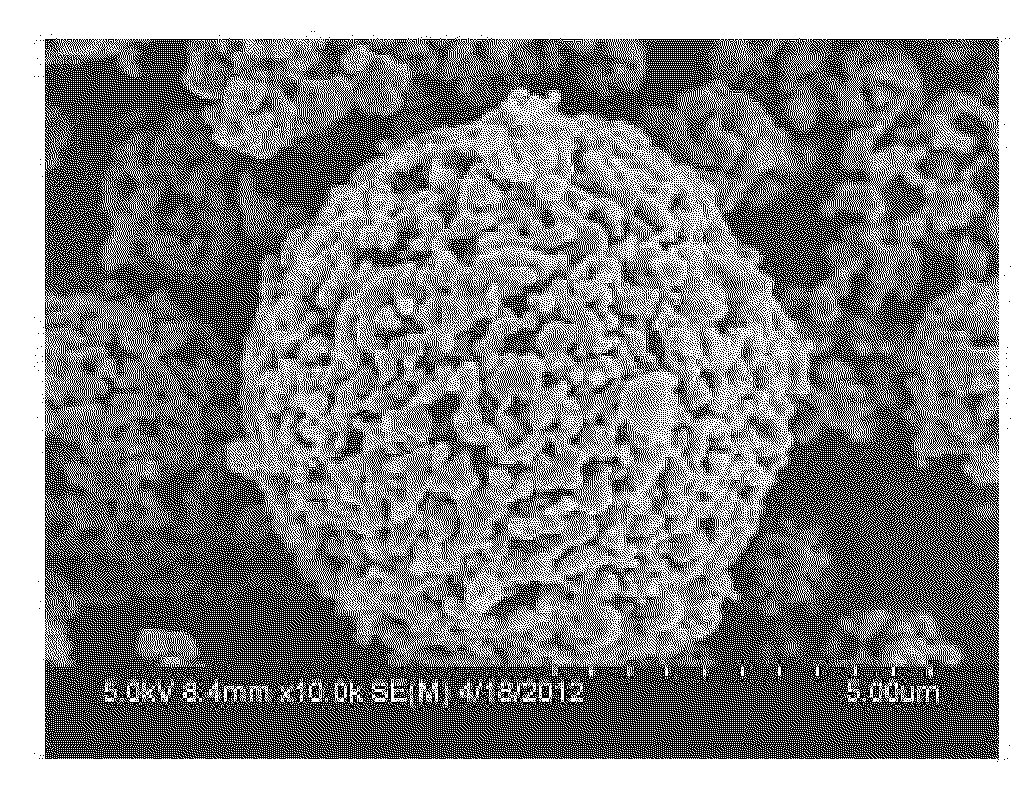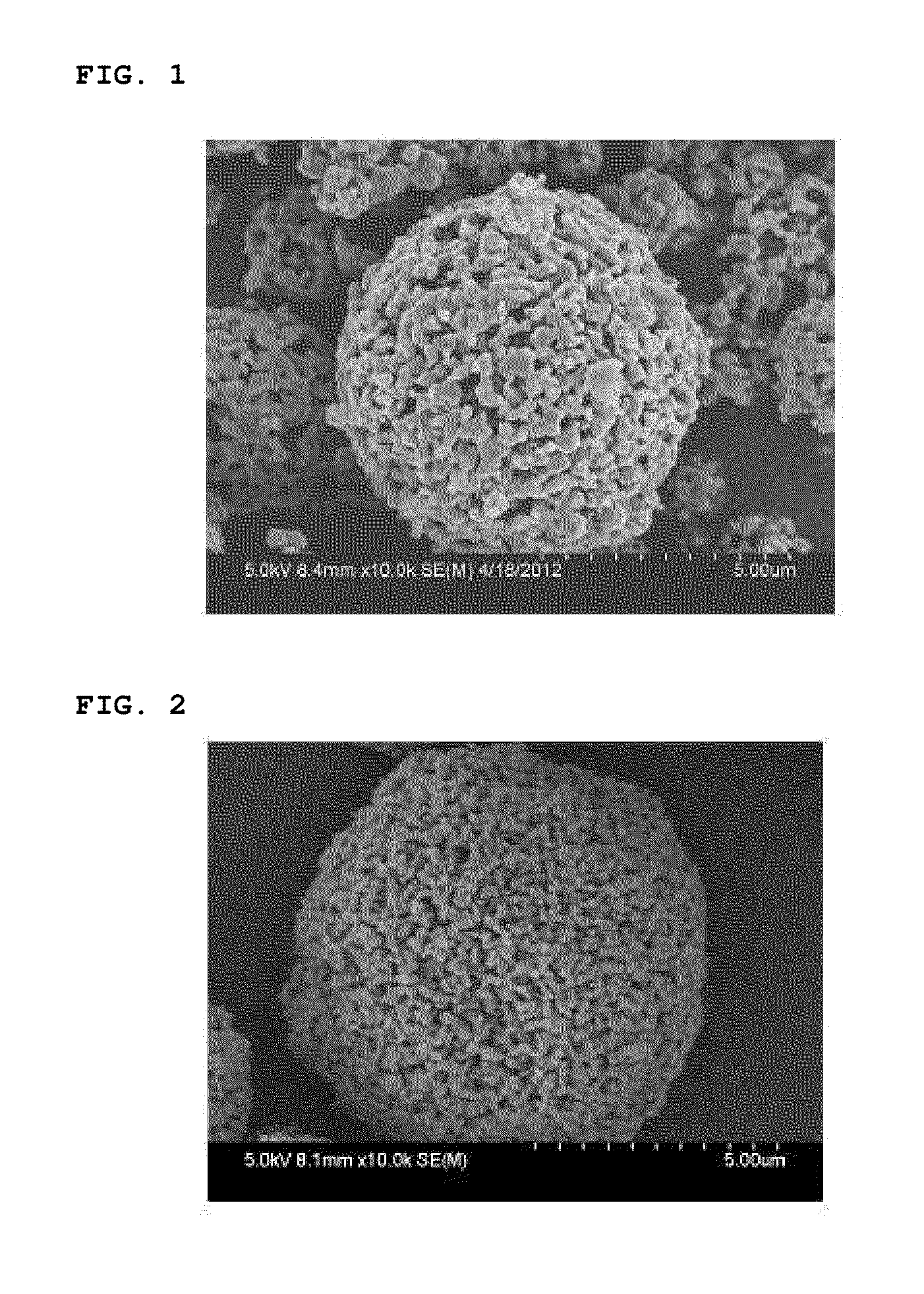Anode active material having high density and preparation method thereof
a technology of anode active material and high density, which is applied in the direction of sustainable manufacturing/processing, cell components, alkali titanates, etc., can solve the problem of limitation of the content of a binder to form an electrode, and achieve the same strength of adhesion to the electrode, reduce internal porosity of lithium metal oxide particles, and improve the adhesion to an anode.
- Summary
- Abstract
- Description
- Claims
- Application Information
AI Technical Summary
Benefits of technology
Problems solved by technology
Method used
Image
Examples
example 1
Preparation of Li4Ti5O12 Having an Average Particle Diameter of 5.4 μm and an Internal Porosity of 3.5%
[0069]LiOH.H2O and TiO2 (anatase) were mixed at a molar ratio of 4:5. A mixture was dissolved in pure water and a solution was then stirred. In this case, a ratio of a total solid material is defined as a solid content of the solution, and a precursor solution was prepared by adjusting the solid content to 30% and stirring. The precursor solution was provided into a chamber of a spray dryer (by EIN SYSTEMS, Co., Ltd.). Then, the precursor solution was sprayed in the chamber and dried. The spray drying were performed under conditions including a drying temperature of 130° C., an internal pressure of −20 mbar, and a feed rate of 30 ml / min, and a Li4Ti5O12 anode active material having an average particle diameter of 5.4 μm and an internal porosity of 3.5% was then obtained by sintering the precursor thus obtained at 800° C. in air.
examples 2 to 4
Preparation of Li4Ti5O12
[0070]Li4Ti5O12 anode active materials having average particle diameters and internal porosities listed in Table 1 were obtained in the same manner as Example 1 except that spraying conditions listed in the following Table 1 were changed.
examples 5 to 8
Lithium Secondary Battery Preparation
[0072]
[0073]Li4Ti5O12 of Examples 1 to 4 listed in Table 1 as an anode active material, carbon black (Super P) as a conductive agent, and PVdF as a binder were mixed at a weight ratio of 88:4:8, and the mixture was then added to N-methyl-2-pyrrolidone as a solvent to prepare a slurry. One surface of a copper current collector was coated with the prepared slurry to a thickness of 65 μm, and then dried and rolled. Then, anodes were prepared by punching into a predetermined size.
[0074]
[0075]Ethylene carbonate (EC) and diethyl carbonate (DEC) were mixed at a volume ratio of 30:70 to prepare a non-aqueous electrolyte solvent, and LiPF6 was added thereto to prepare a 1 M LiPF6 non-aqueous electrolyte solution.
[0076]Also, a lithium foil was used as a counter electrode, i.e., a cathode, and a polyolefin separator was disposed between both electrodes. Then, coin-type half cells were prepared by injecting the electrolyte solution.
PUM
 Login to View More
Login to View More Abstract
Description
Claims
Application Information
 Login to View More
Login to View More - R&D
- Intellectual Property
- Life Sciences
- Materials
- Tech Scout
- Unparalleled Data Quality
- Higher Quality Content
- 60% Fewer Hallucinations
Browse by: Latest US Patents, China's latest patents, Technical Efficacy Thesaurus, Application Domain, Technology Topic, Popular Technical Reports.
© 2025 PatSnap. All rights reserved.Legal|Privacy policy|Modern Slavery Act Transparency Statement|Sitemap|About US| Contact US: help@patsnap.com


